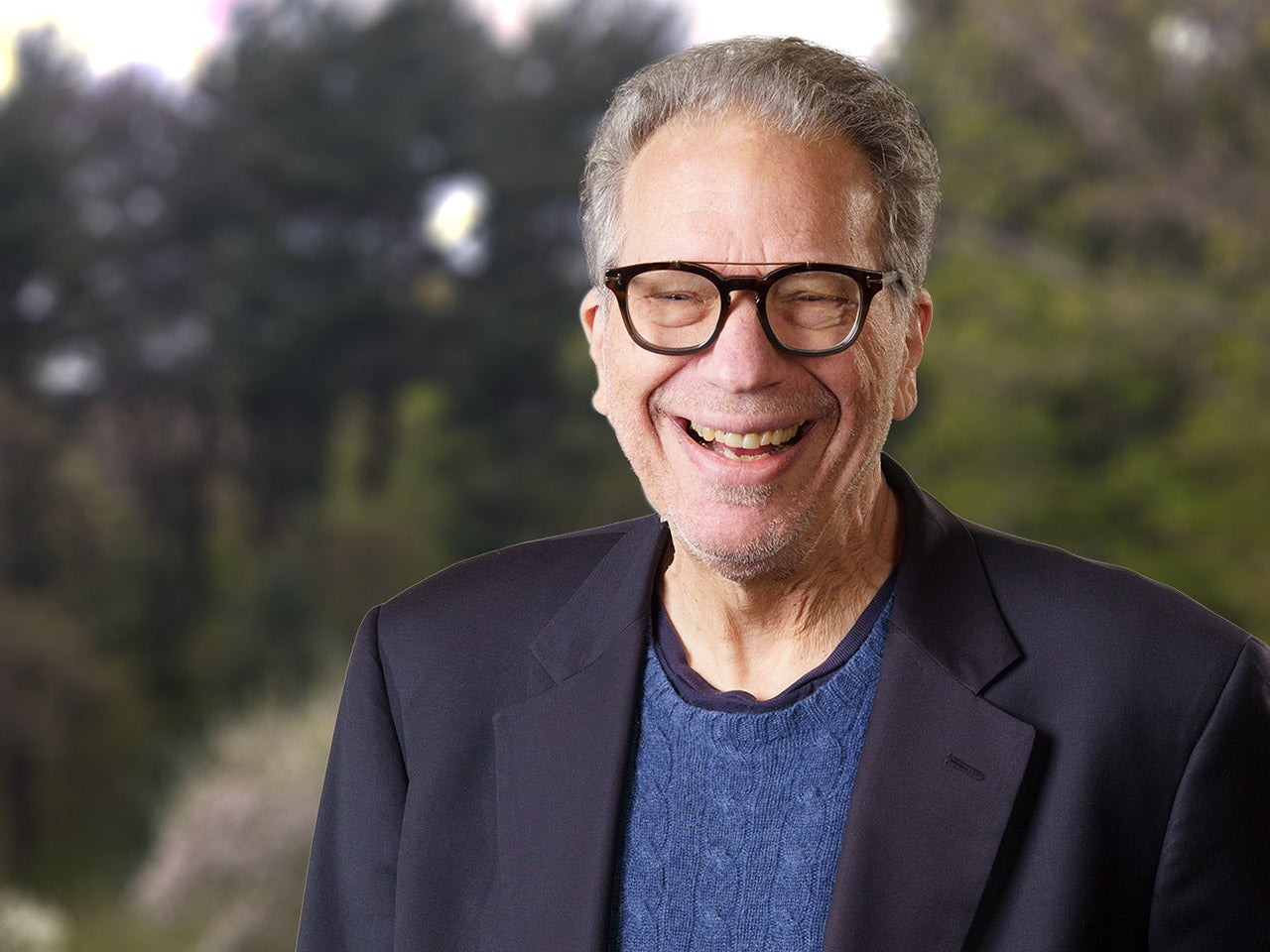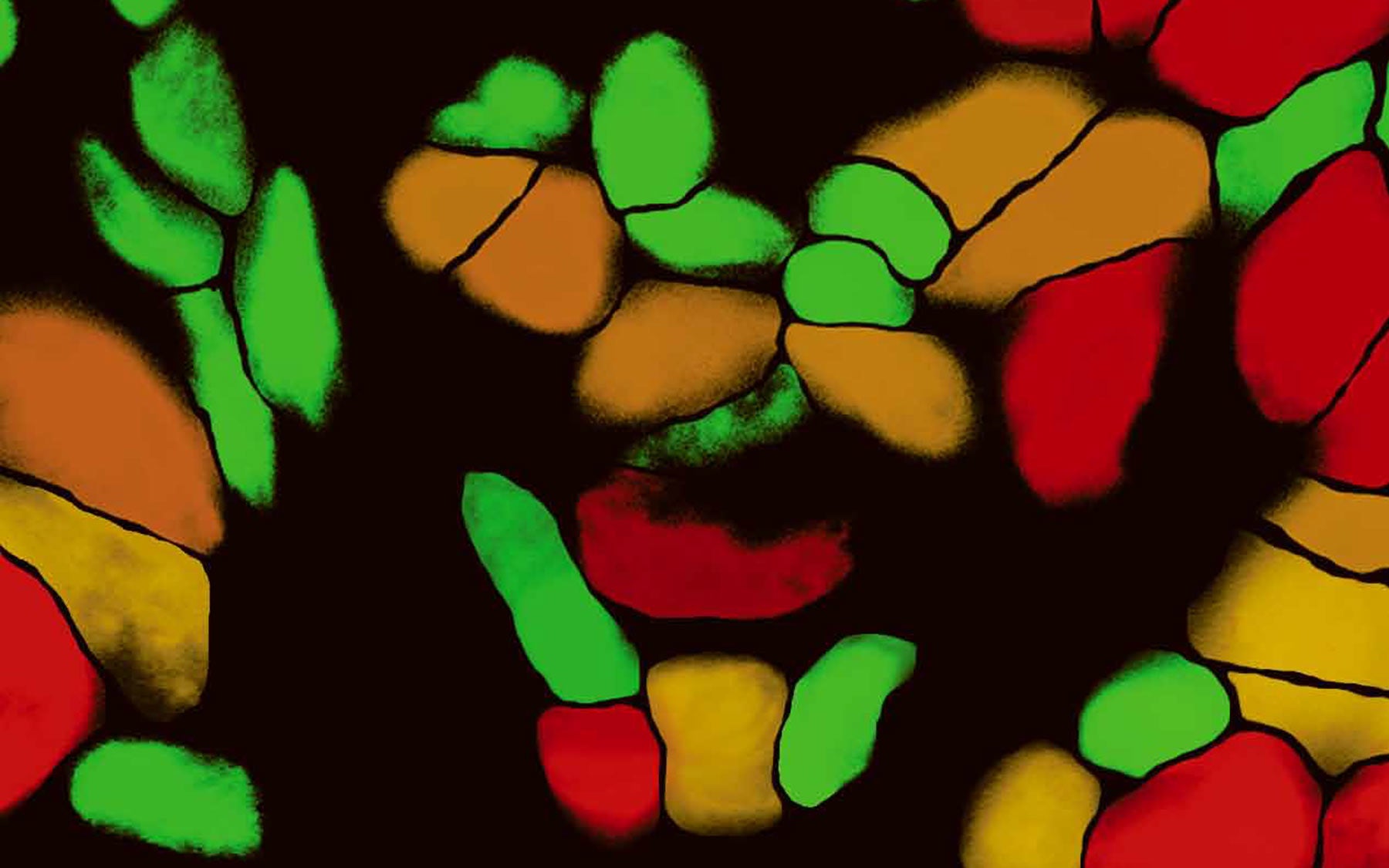How do tumors progress? A technique devised by a CSHL team led by Drs. Mike Wigler and Jim Hicks might help answer this question and point to tumor-halting strategies.
As tumor cells multiply, pieces of their chromosomal DNA break off, get deleted or copied over and over. A single tumor thus becomes a mosaic of distinct subpopulations of cells with different mutational changes.
Like detectives solving a crime by piecing together a timeline of events, the CSHL team is using their new technique to infer tumor progression by building a timeline of when these various populations appear within the tumor and how they are spatially organized.
The image, by graduate student Nicholas Navin, shows such organization within a section of a ductal carcinoma, a type of breast cancer. Each colored spot within the tumor section corresponds to a cell’s nucleus, where DNA is stored. Normal cells (green) that support the tumor’s structure coexist with two tumor cell subpopulations (yellow and red) whose larger nuclei contain more DNA. This increased DNA content is due to the repeated copying of a chromosomal region, which creates extra copies of a particular cancer-causing gene.
The new technique, which involves the use of fluorescent tags that stick exclusively to this gene, can distinguish between tumor subpopulations that have two copies of the gene (yellow) and those that have more than ten gene copies (red). Such detailed analysis of a tumor’s genetic landscape could be clinically valuable, to design gene-specific therapies that eliminate all subpopulations within a tumor.
Written by: Hema Bashyam, Science Writer | publicafairsf@cshl.edu | 516-367-8455
About

Michael Wigler
Professor
Russell and Janet Doubleday Professor of Cancer Research
Cancer Center Member
Ph.D., Columbia University, 1978
